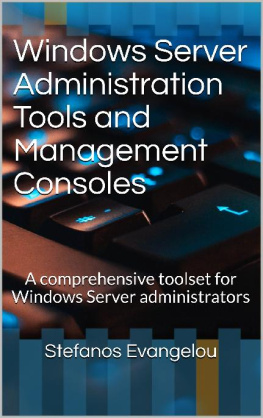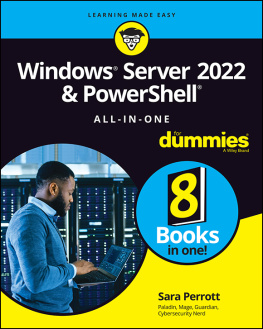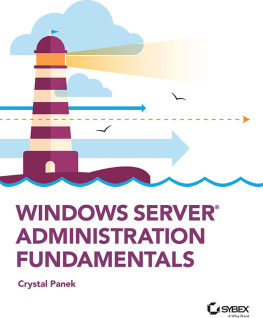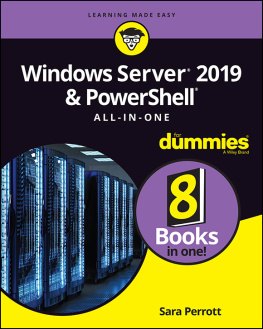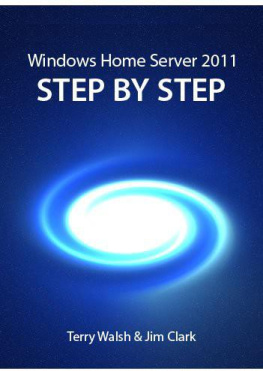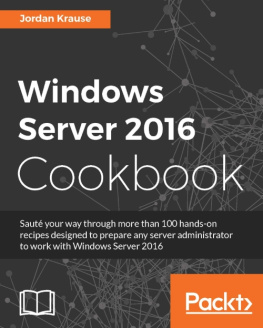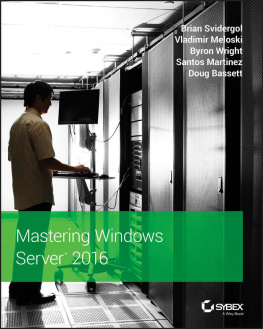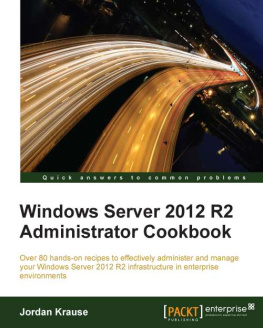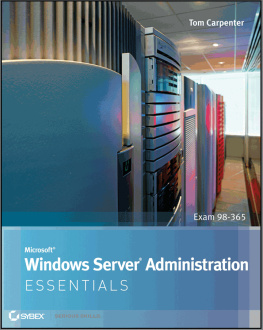Foreword
The purpose of this book is to provide an informative inventory of server administration tools and management consoles for Windows Server operating systems. Due to the diversity of available tools and administration tasks, the inventory contained in this book follows a structured approach, aiming to organize the most useful remote administration tools by category and by area of application. This book is addressed to Windows Server system administrators, network and storage administrators, technical support technicians and help desk operators as well as to any computer science student or IT hobbyist who wishes to expand their knowledge and skill set in the area of Windows Server systems administration.
Preface
Server Manager, Windows Server role services and features, Remote Server Administration Tools (RSAT), Windows Admin Center, Windows Management Console (MMC) snap-ins, the Windows Terminal, Windows CLI utilities such as dism, chkdsk and sfc, Windows Powershell and Powershell Core modules and snap-ins, Azure CLI, Windows SysInternals and third party tools such as Wireshark and Remote Desktop connection clients. These plus more Windows Server remote administration tools and management consoles are covered and analyzed in this book from a Windows Server sysadmin perspective. A well-organized inventory of system administration tools for Windows Server is presented and the reader is provided with the right tools and techniques for improving the efficiency of their day to day administrative tasks. References for further study are provided in each section.
Whom is this book for?
In your day job as a Windows Server systems administrator, are you doing direct server logons for running administration tools locally on each server of your infrastructure, thus increasing security risk and affecting overall performance? Are you required to physically visit the server room or datacenter and waste valuable time for tasks you could normally perform remotely? Are you struggling to get the right Windows Server remote administration tool for the tasks at hand? Are you having difficulty understanding the numerous concepts, protocols and components related to systems remote administration? If you answered yes to any of these questions, then you need to study this book. Check inside the book for step-by-step instructions on acquiring, deploying and operating the most useful Windows Server remote administration tools and management consoles.
Windows Server Administration Tools and Management Consoles
A comprehensive toolset for system administrators
Table of contents
Contents
Keywords
Windows Server, Administration Tools, Management Consoles, Remote Administration, Software-Defined, SDDC, Hyper-converged infrastructure, Remote Administration Protocols, Networking, Storage, Firewall, IDS/IPS, Application Gateway, Router, Switch, SAN, NAS, Cloud, Azure, Microsoft, SysInternals, Citrix, RDP, ICA, HDX, PCoIP, SSH, Spice, VNC, WMI, Troubleshooting, Web, CLI, RSAT, Remote Server Administration Tools, Microsoft Management Console, MMC, snap-in, Scripting, Powershell, Windows Terminal, Batch, Python, Perl, CI/CD, Ansible, Terraform, Puppet, Chef, IaC, Active Directory, VM, Virtual Machine, Virtualization, Hypervisor, Hyper-V, Lab, Security
Chapter 1: Introduction to Windows Server remote administration
According to Wikipedia remote administration refers to any method of controlling a computer from a remote location. Software that allows remote administration is becoming increasingly common and is often used when it is difficult or impractical to be physically near a system in order to use it. A remote location may refer to a computer in the next room or one on the other side of the world. It may also refer to both legal and illegal (i.e. hacking) remote administration. Considering the complex nature of modern hybrid architecture computing systems, including both on-premise and cloud infrastructures, the need for efficient remote administration of diverse hardware systems, operating systems, software services and applications is becoming increasingly high.
Moving from the old traditional IT organization computer room on-premise to a more distributed datacenter architecture for larger organizations to a hybrid global cloud architecture for modern businesses of any kind, it becomes apparent that physical presence of IT personnel is not an option in various cases. It is therefore important that the modern system administrator is well equipped with knowledge and skills around remote systems administration. Physical presence is usually required during the very first phases of an infrastructure setup, including data center power, fire protection, CCTV and air conditioning installations, server racking, cable patching and cable labelling. Connection to the various hardware systems can be established via a variety of OSI layer 2 protocols and ports, including Ethernet (copper), fiber optic cables, USB and console/serial cables. After the initial hardware and networking setup, systems administrators should aim for 100% remote administration, except for emergency and planned hardware maintenance tasks which still require physical presence in the datacenter.
At the same time, the rise of the software-defined principles and the associated hyper-converged infrastructures has contributed to an increase in demand for competent system administrators who possess skills in remote administration of software-defined server, networking and storage systems. The software-defined datacenter (SDDC) of the future is geared towards the intangible software world as compared to the declining physical hardware world.
To accommodate the rising needs for remote administration, there is a wide range of remote systems administration tools and management consoles, depending on the hardware components and operating system of each physical or virtual appliance being managed. At a high level the systems which concern the analysis of this book are primarily servers and workstations, networking appliances and shared storage appliances. This book briefly touches upon basic administration features available for managing miscellaneous networking and storage devices. Emphasis is placed on the administration of Windows Server based servers, running both Windows Server Core and Windows Server with Desktop Experience. An analysis of Unix based server administration tools will be presented in the scope of a separate book.
The book starts the analysis by presenting the most fundamental concepts and protocols supporting the act of remote systems administration. It then proceeds by presenting details of Windows Server administration tools and management consoles organized by category, i.e. MMC-based, CLI-based and web-based. An overview of security tools and scripting languages which are widely used in Windows Server based systems is also discussed. Finally, a practical how-to guide is provided to the reader for deploying a Windows Server 2019 based virtual machine into which all previously discussed server administration consoles can be deployed for a consistently managed Windows Server 2019 infrastructure.
Chapter 2: In-band and out-of-band management
In-band management
In-band management involves performing systems administration via known remote management protocols such as RDP or SSH using the main network infrastructure of a data center for remote connectivity. It is a best practice to create network zones, subnets and VLANs to segregate the management traffic from other types of traffic in the network, such as for instance Active Directory authentication traffic, DNS/DHCP traffic, file server traffic, etc. The in-band management VLAN should be utilized by any administrator endpoint in the network which accesses the management interface of any connected appliance or server. The reader is referred to Chapter 14 of this book, where a step-by-step how-to guide is provided for building a Windows Server 2019 management virtual machine. Any known protocol which is used to remotely access a datacenter resource (server, networking or storage appliance) can be used inside an in-band management solution. Common examples of remote access protocols used for in-band connections are RDP, SSH, Citrix ICA/HDX, VMWare PCoIP and WinRM. More details on remote management protocols are provided in chapter 4 of this book.


